Himeji Castle(姫路城)
Himeji castle is the most famous castle in Japan. Out of so many castles I have visited in the past, Himeji stands out as a real defensive castle and it is large. The entire trip round the castle takes 2 hours and 600Yen. The castle is regarded to be a national cultural treasure by UNESCO.
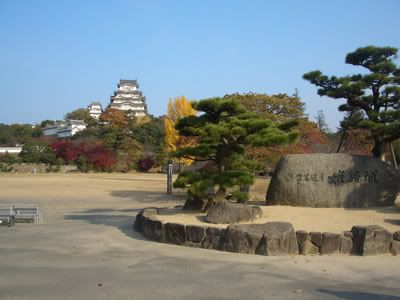
Walking through the castle gates and into the castle perimeters is half the fun. There is a Japanese guide leading a small group, so we just tag along. Translation is provided free by master cheng who furnished us with lots of information on the different aspects of the castle. The castle road is designed in such a way so as to confuse enemy troops attacking the main keep. Firstly, troops running to the keep will feel as if they are running away from it as the main castle building is behind them. Secondly, there are many gates and a large number of them just lead them out of the castle instead of towards the main keep. So you can really imagine them running towards the keep and find themselves back to the outside with the gate close behind.
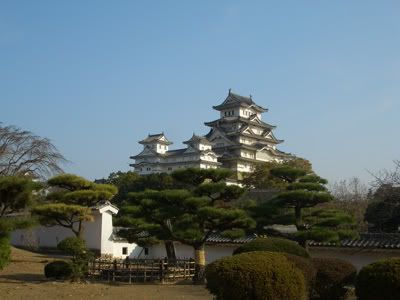
There is a building at the outer perimeter where a Tokugawa princess once stayed. Well actually only a single room is suitable for a princess, all the other rooms in the building are cold-hard stone where weapons are kept. So here is a sneak peek to the room where she stayed.
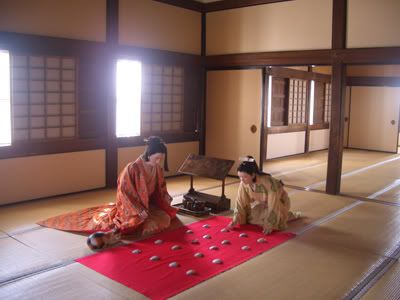
Along the way, we noticed a large number of holes in the walls where the guards can fire arrows and rifles from it. There are also many trap doors where hot oil, stones and all kind of funny things that can be thrown down to the enemy soldiers. This castle is really evil, but that is how castle should be designed. To defend themselves and keep the enemy out. Nevertheless, this castle has never been attacked before.
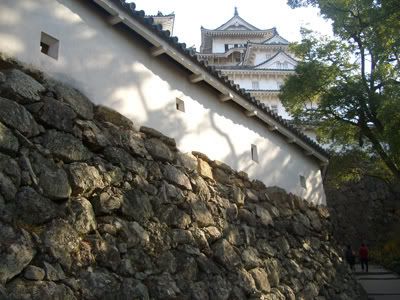
There are 6 floors to the castle but from the exterior, it gives people an illusion that there is only 5 levels. In the main building, there are many compartments where people can hide in and surprise the enemy. At the top is a shrine. This is the first time I see a shrine indoors in a castle. There is a story behind it as to why it has been shifted into the castle.
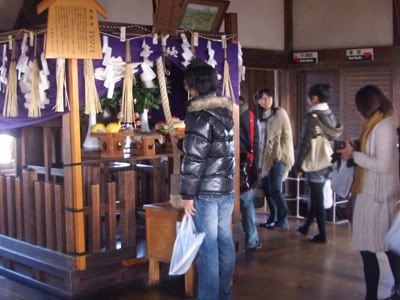
We were rewarded with a paranomic view of the areas surrounding the castle at the top.

After leaving Himeji, we took the densha to our next stop - Kobe(神戸). A limited express train for Kobe departs every 15mins and it take 30mins at a cost of 950Yen. As we were sitting at the first carriage, we noticed the densha captain making hand signals almost every minute. I have taken a photo of him with the hand signal, it is a pointy finger towards the front. I'm not really sure what it mean but my Japanese colleague told me that they used it to signal there is no train or obstacle in front. I only notice them doing that when they stop at every station and the captain at the back will signal to the captain in front that it is all set to go.

On the way to Kobe (and actually before that to Himeji), we will pass by the Akashi Kaikyo Bridge which connects Kobe to Shikoku. It is the world's longest suspension bridge which has a length of 4km.
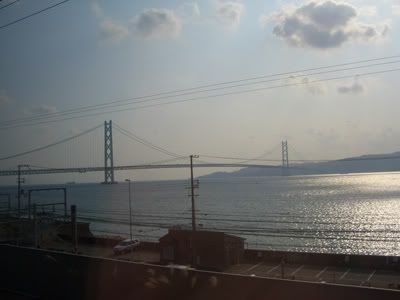
Kobe
We arrived at Kobe station and walked down from there into the surrounding shopping malls. As it is around 1.30pm, we began seeking a good place for lunch. We were divided into having McDonalds, KFC, Kobe Beef and so on. But we managed to find a food-court look-alike place at one of the shopping mall, it has all the above mention restaurants at the same place. So I just went for Pepper Lunch. After lunch, we left the shopping area into the modern looking Kobe city. This city was almost destroyed during the 1995 earthquake but it was rapidly rebuilt. Thus most of the buildings we see now are only less than 12 years old (feels just like Singapore).
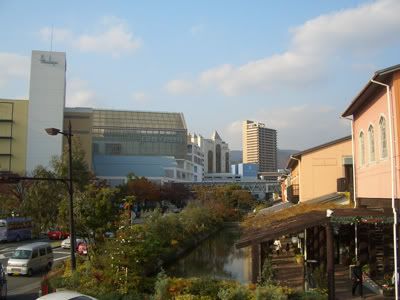
We arrived at the Kobe Harborland and this is one of the main landmark sights that can be seen from the Harborland to Meriken Park.
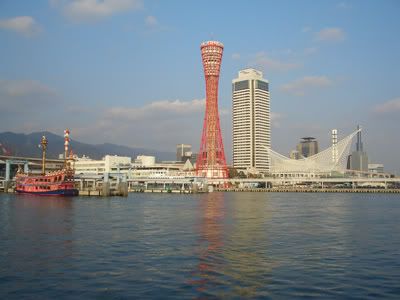
We walked along the waterfront to Merikan Park. At the other end of the Merikan Park is the Kobe Earthquake memorial park. Over here there are videos showing the destruction and recovery of Kobe from the earthquake as well as pictures and posters educating visitors on it. A section of the destruction is still preserved and it is captured on photo below.
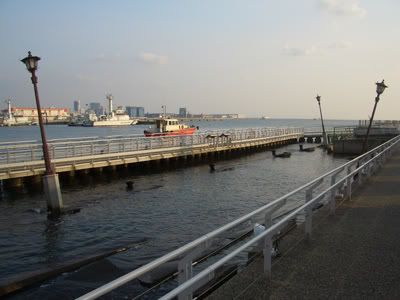
From the Merikan Park, just a 15mins walk north is Japan's second largest Chinatown, the Nankinmachi(南京町). The largest Chinatown is in Yokohama which I had visited last year. Going to this chinatown really feels like I am in one of those European's chinatown (especially London). Firstly, the chinatown district always separate from the surrounding areas with a mega-gate like the one below.
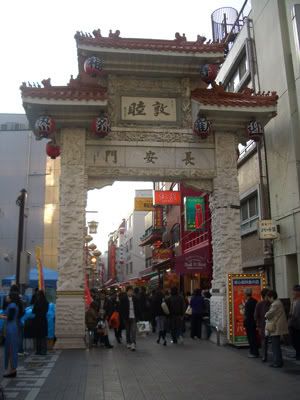
Secondly, chinatown shops are always clamp up together and there are many shops. The services provided by the shopts can be classified as follows: provision shops which sell products from china, vegetable shops which give this place a market look and feel and finally lots of chinese restaurants offering dine in to take away.

At the centre of chinatown is normally a temple or some cultural sight. At the Nankinmachi, there is a dragon pavilion.

We left Nankinmachi after strolling through the main street. As there is still time, we decided to head northwards to Kitano-cho, an area where many Western people settled down in the past. There are still many foreign houses there. Just nice when I'm taking this snapshot, an old vintage car just drove by.
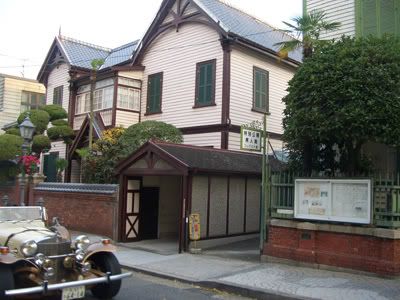
This is our group photo (minus master cheng who is taking the photo) of us going to the top of Kitano.
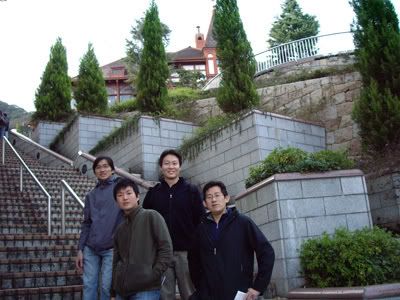
The Tourist Information Centre next to this foreign mansion mentioned that this is one of the more famous houses in the area and it is open for admission at 300Yen.
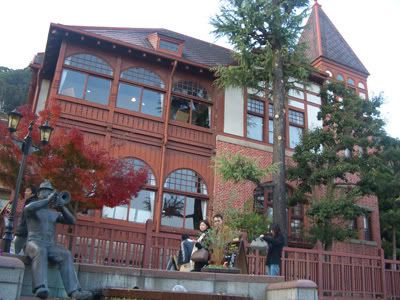
It is almost sundown and I have to make my way to Sannomiya train station. I bid farewell to the rest at 4.30pm and I went down the hill. Along the way, I took a sundown shot of the Kitano street. This picture also looks familiar to one of the Japan travel site's picture which introduces Kitano-cho.
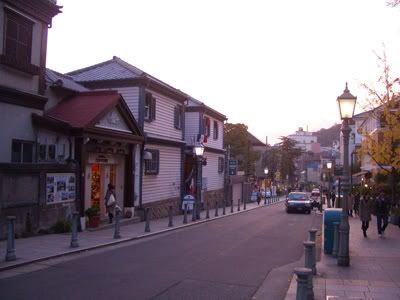
I managed to locate the train station just 20 minutes before departure (my bus departure time is at 5.15pm). Surprisingly, the trip back to Nagoya this time round is ahead of schedule. It is the first time that I got back to my destination early, at 8.20pm (20mins before the designated time). Thus I'm able to catch the 8.40pm bus back to Tokadai from there.